Originally Posted By: pbm
Originally Posted By: Colt45ws
Originally Posted By: pbm
Could somebody explain how a filter minder works and how it is installed? Thank You.
You drill a hole somewhere after the filter, often in the part of the filter housing that leads to the engine. Insert the provided grommet and the filter minder pushes in to the grommet.
Then you drive. I usually like to floor it at least once at let the engine wrap out once so it sees maximum air demand.
The Filter minder will 'ratchet' up and then show you how much restriction the air filter is causing in inches of water. As the filter gets more loaded it will ratchet up more and more until it reads that a change is due.
In his case, he has one that reads to 30" of water, which is too much for a N/A engine so he is stopping part way into its range. That size is suited more for a turbo charged diesel engine (The turbo makes up for the restriction by sucking harder, so there is no loss of power from the engine. Same way they dont lose but a few % going up into the high mountains.)
Thanks Colton: Are you saying that the hole should be drilled in the (smooth part) of the intake (as opposed to the accordion like section) downstream of the air filter housing?
PS: I ask because this intrigues me....I've always been a stickler for maintaining my vehicles but I'll admit that the A/F got little attention....I would change them out approx. every 30K (sometimes I would shake them out and reinstall every 10 or 15K but I stopped doing that because I was worried about proper sealing of the filter box after disturbing it...)
Pictures always help. Here's how I mounted mine:
Air filter box on Toyota 5.7L V8 before installation:
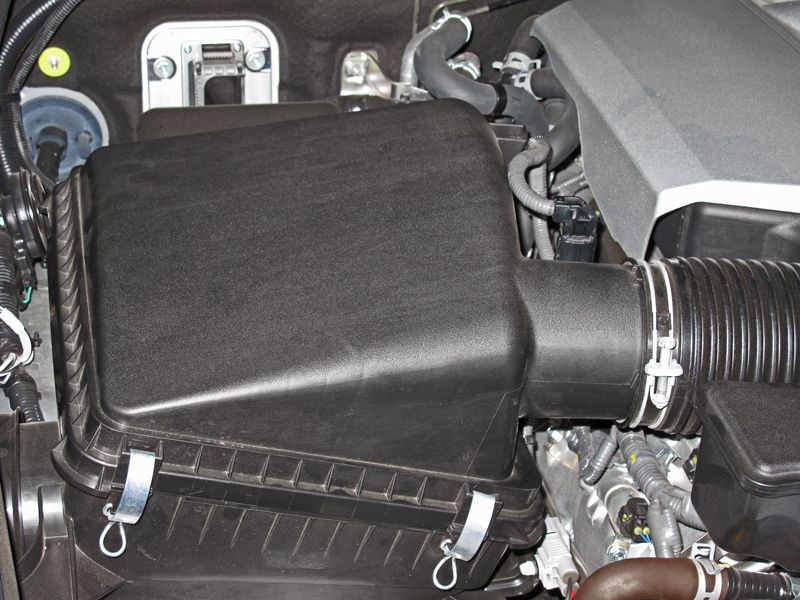
Top of filter box removed shows position of air filter:
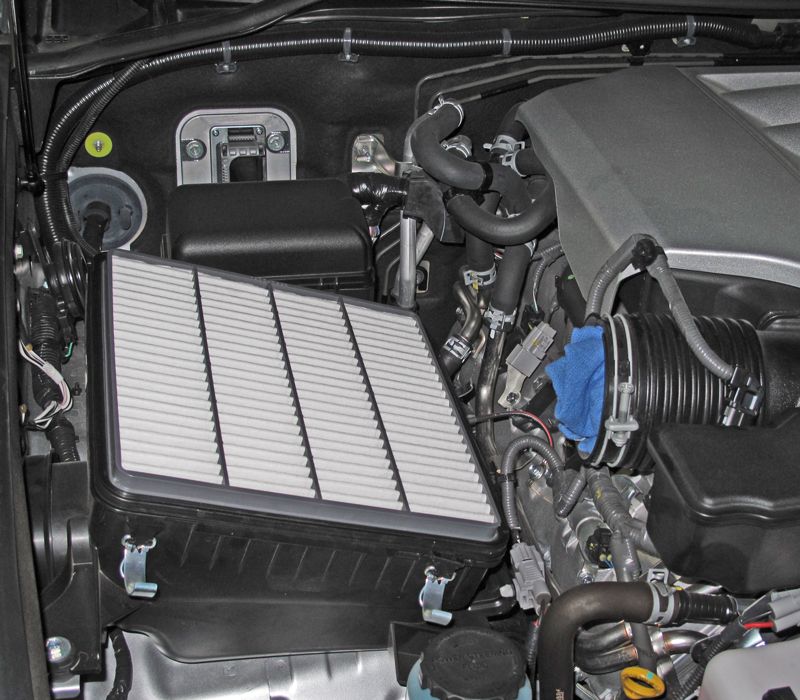
Mark desired location for filter gauge:
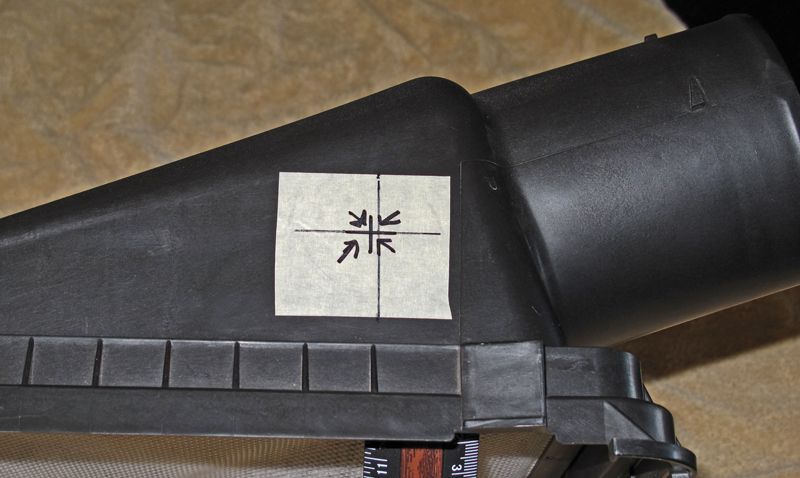
Drill hole, insert grommet and press in filter gauge:
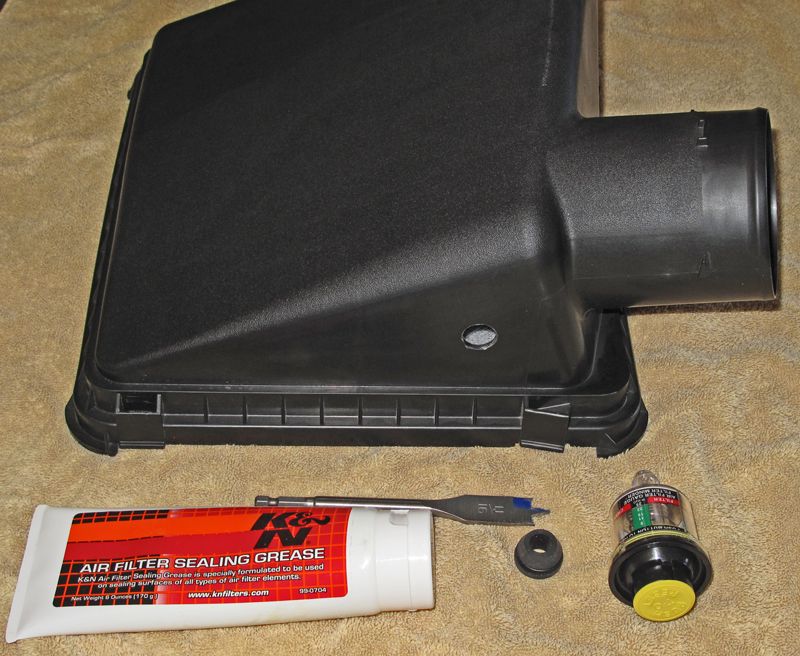
After installation:
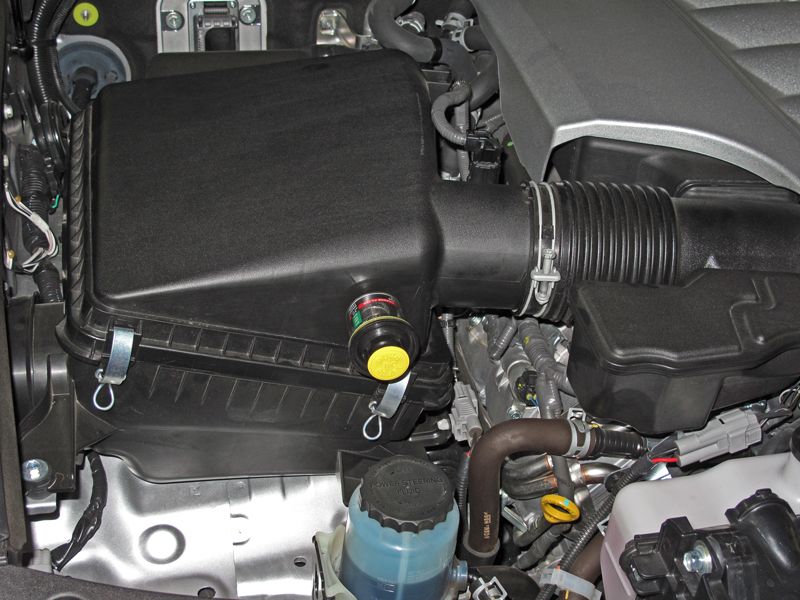
I chose the K&N gauge which goes into the red at 10" H2O:
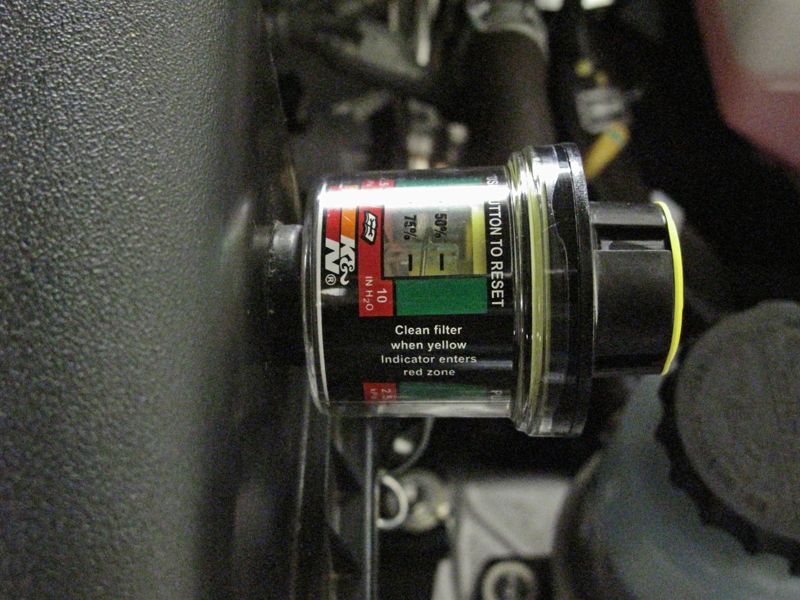
HTH
Originally Posted By: Colt45ws
Originally Posted By: pbm
Could somebody explain how a filter minder works and how it is installed? Thank You.
You drill a hole somewhere after the filter, often in the part of the filter housing that leads to the engine. Insert the provided grommet and the filter minder pushes in to the grommet.
Then you drive. I usually like to floor it at least once at let the engine wrap out once so it sees maximum air demand.
The Filter minder will 'ratchet' up and then show you how much restriction the air filter is causing in inches of water. As the filter gets more loaded it will ratchet up more and more until it reads that a change is due.
In his case, he has one that reads to 30" of water, which is too much for a N/A engine so he is stopping part way into its range. That size is suited more for a turbo charged diesel engine (The turbo makes up for the restriction by sucking harder, so there is no loss of power from the engine. Same way they dont lose but a few % going up into the high mountains.)
Thanks Colton: Are you saying that the hole should be drilled in the (smooth part) of the intake (as opposed to the accordion like section) downstream of the air filter housing?
PS: I ask because this intrigues me....I've always been a stickler for maintaining my vehicles but I'll admit that the A/F got little attention....I would change them out approx. every 30K (sometimes I would shake them out and reinstall every 10 or 15K but I stopped doing that because I was worried about proper sealing of the filter box after disturbing it...)
Pictures always help. Here's how I mounted mine:
Air filter box on Toyota 5.7L V8 before installation:

Top of filter box removed shows position of air filter:

Mark desired location for filter gauge:

Drill hole, insert grommet and press in filter gauge:

After installation:

I chose the K&N gauge which goes into the red at 10" H2O:

HTH
